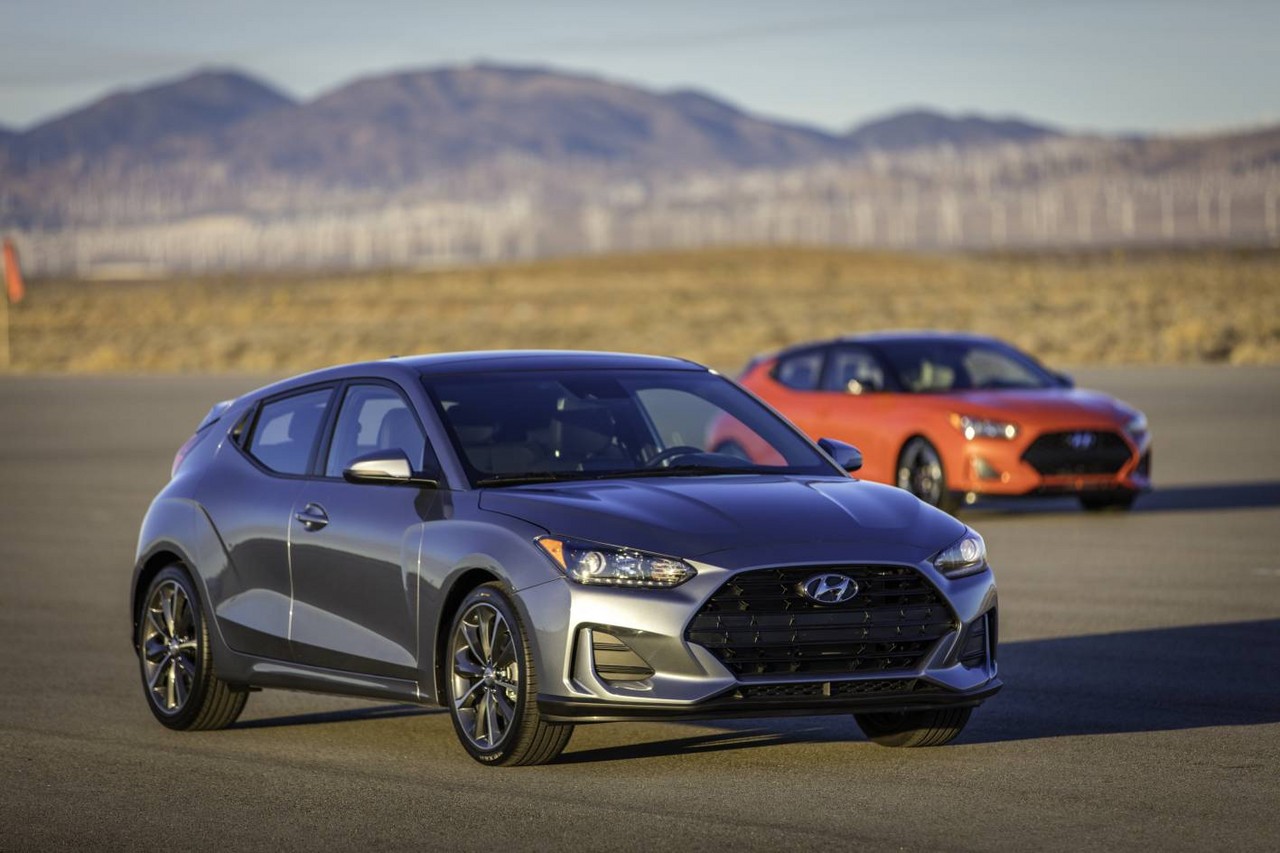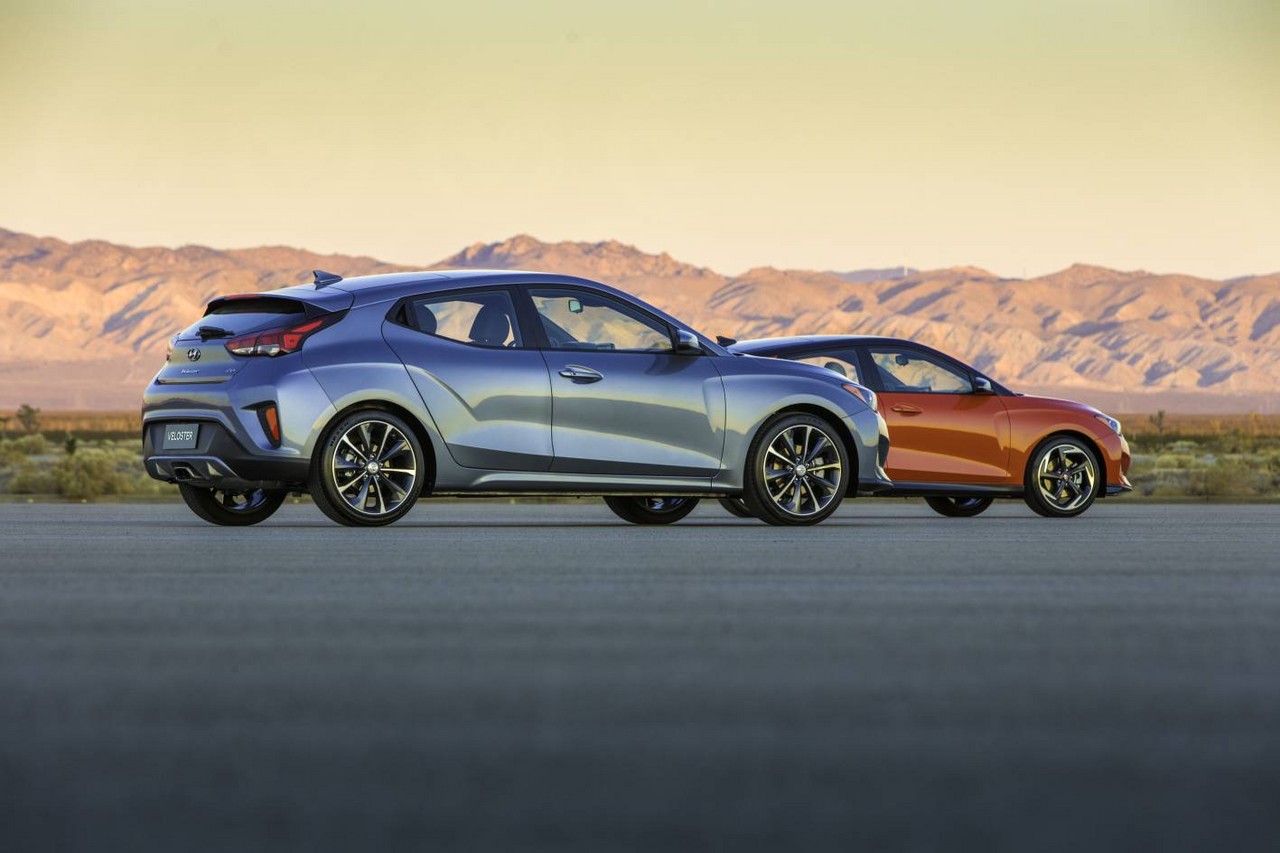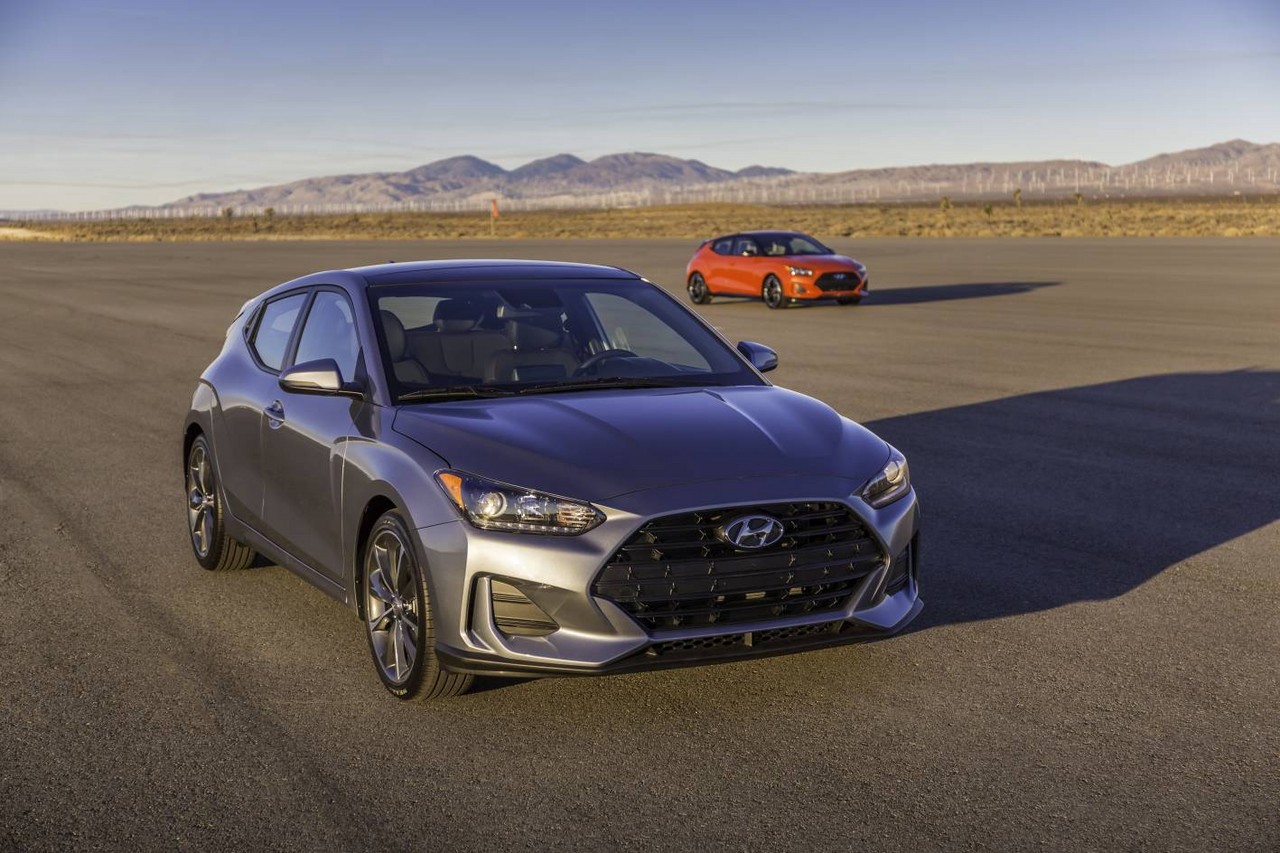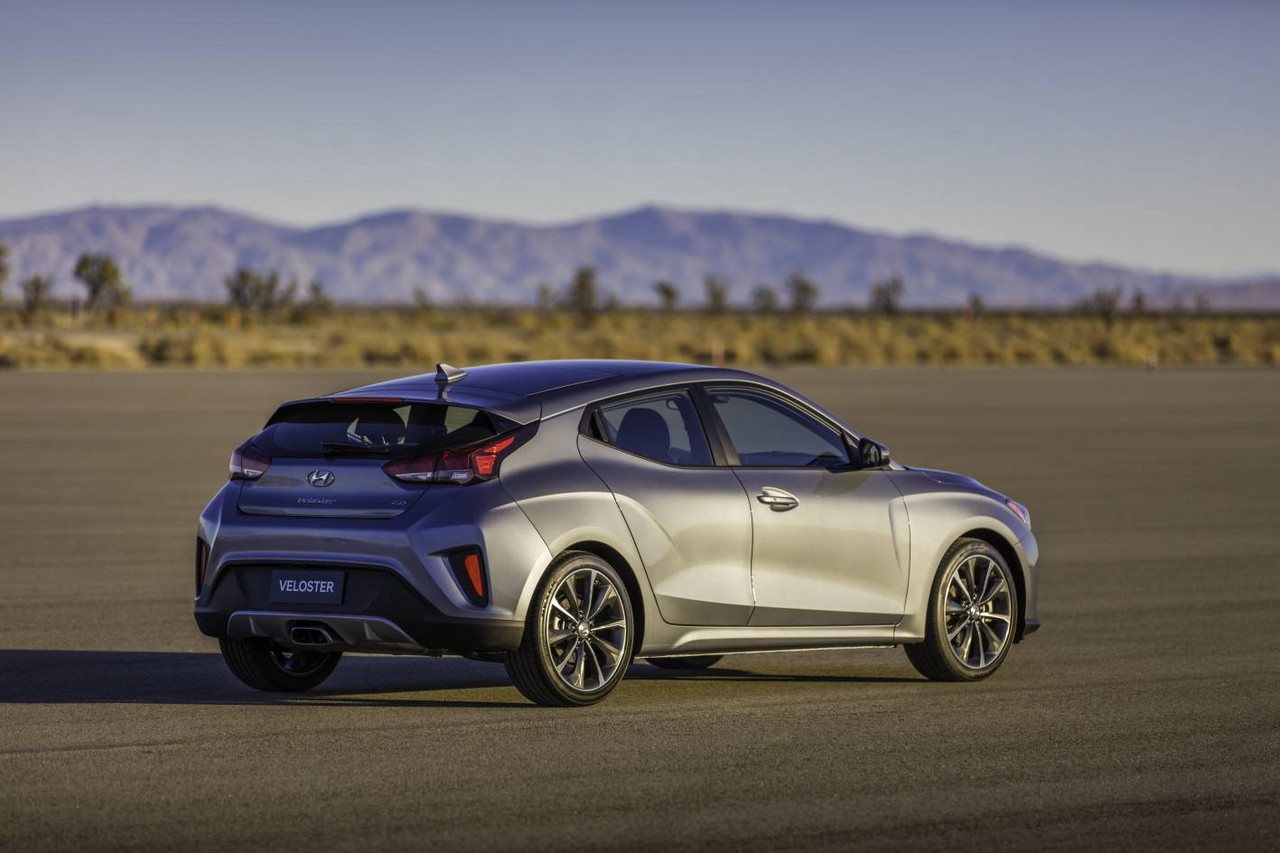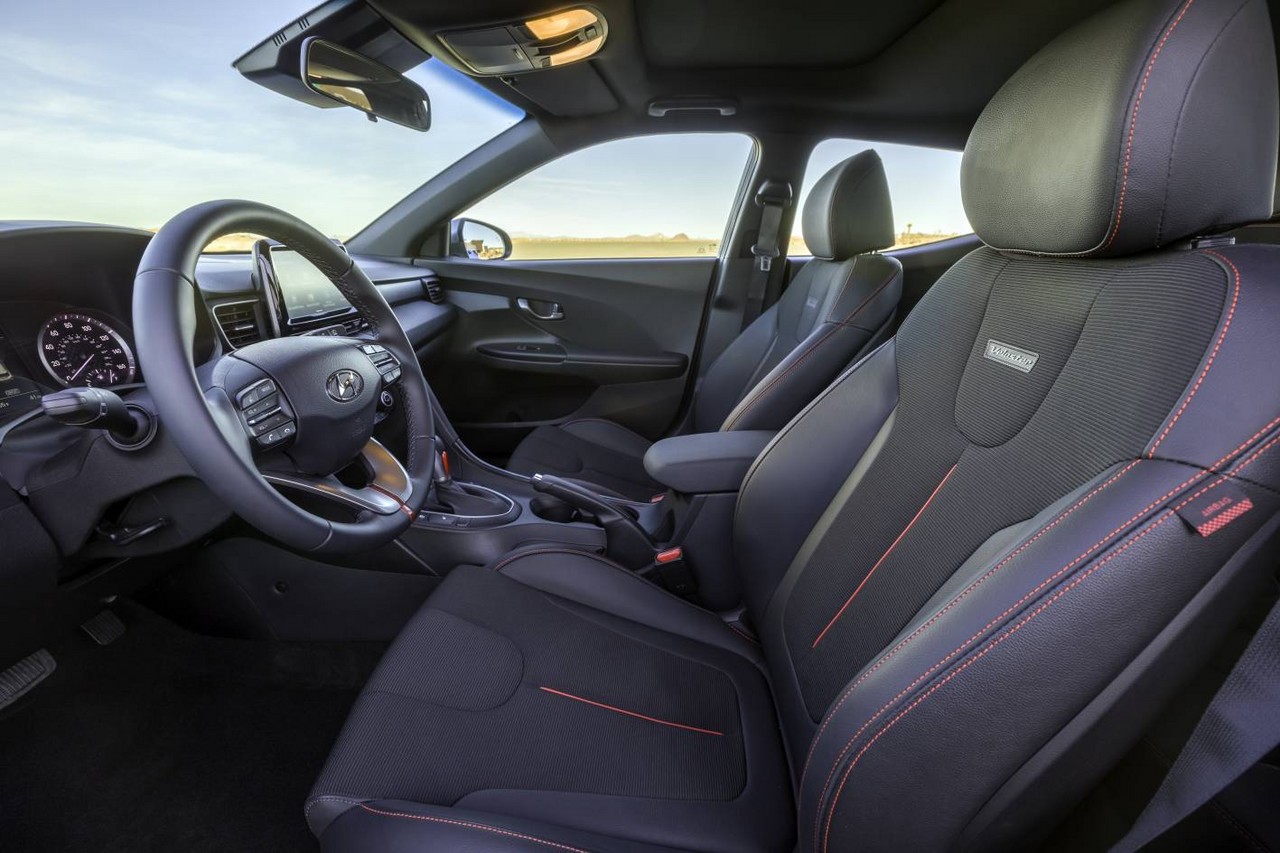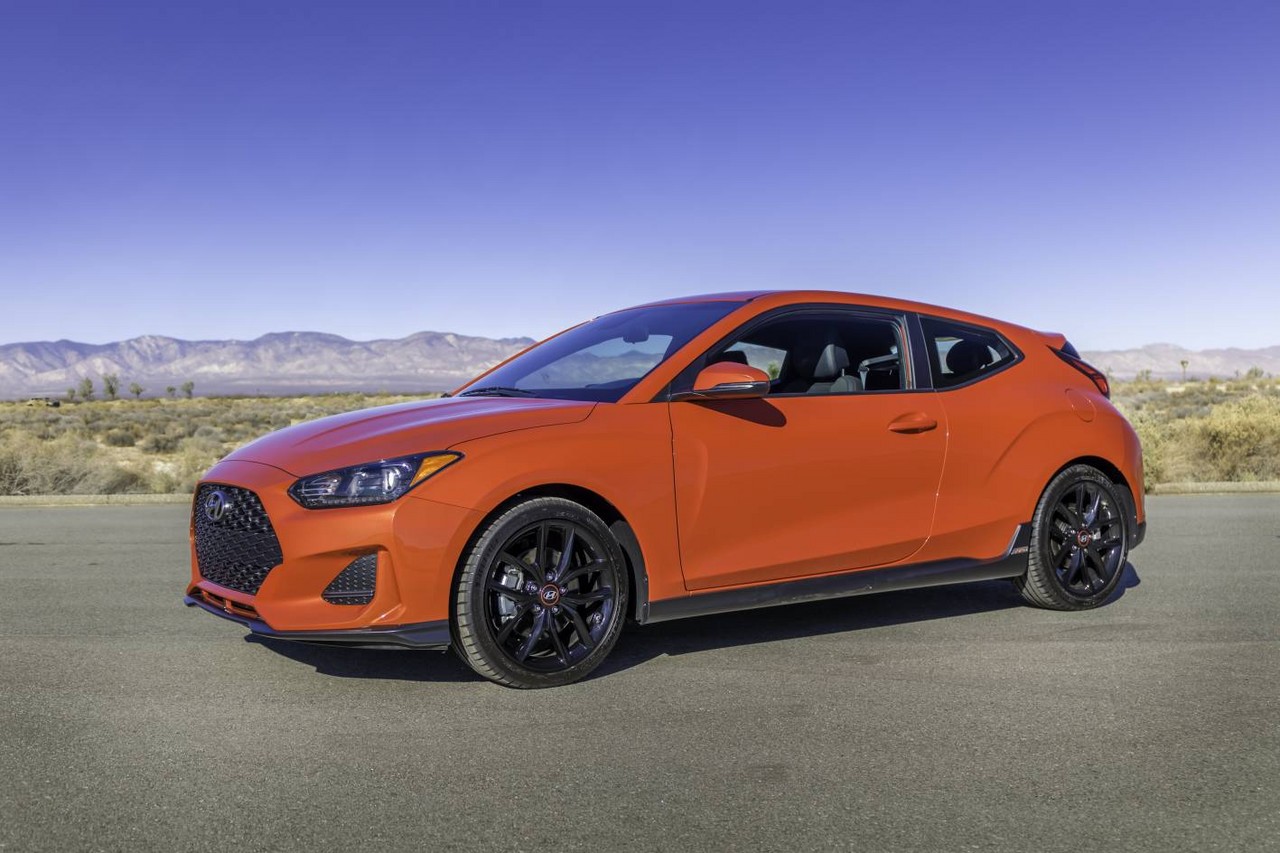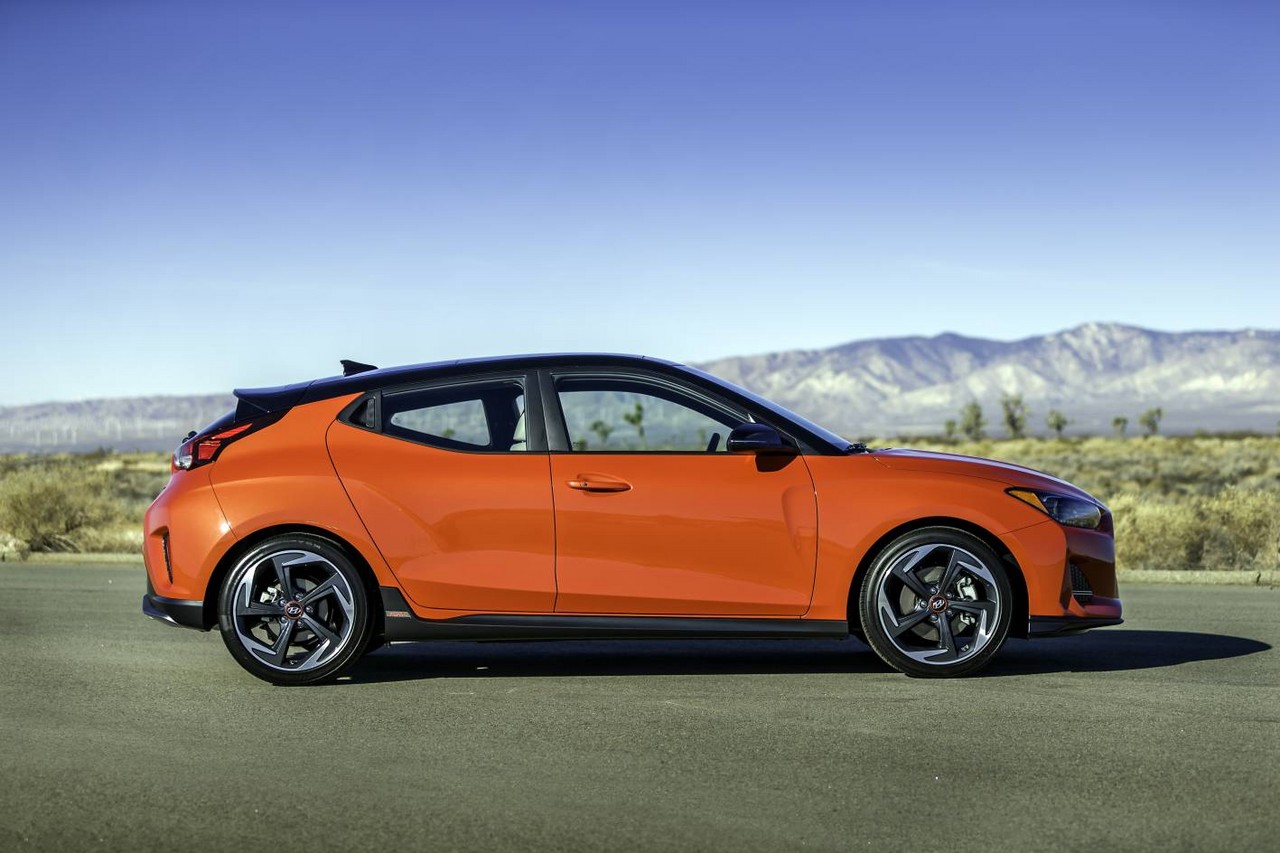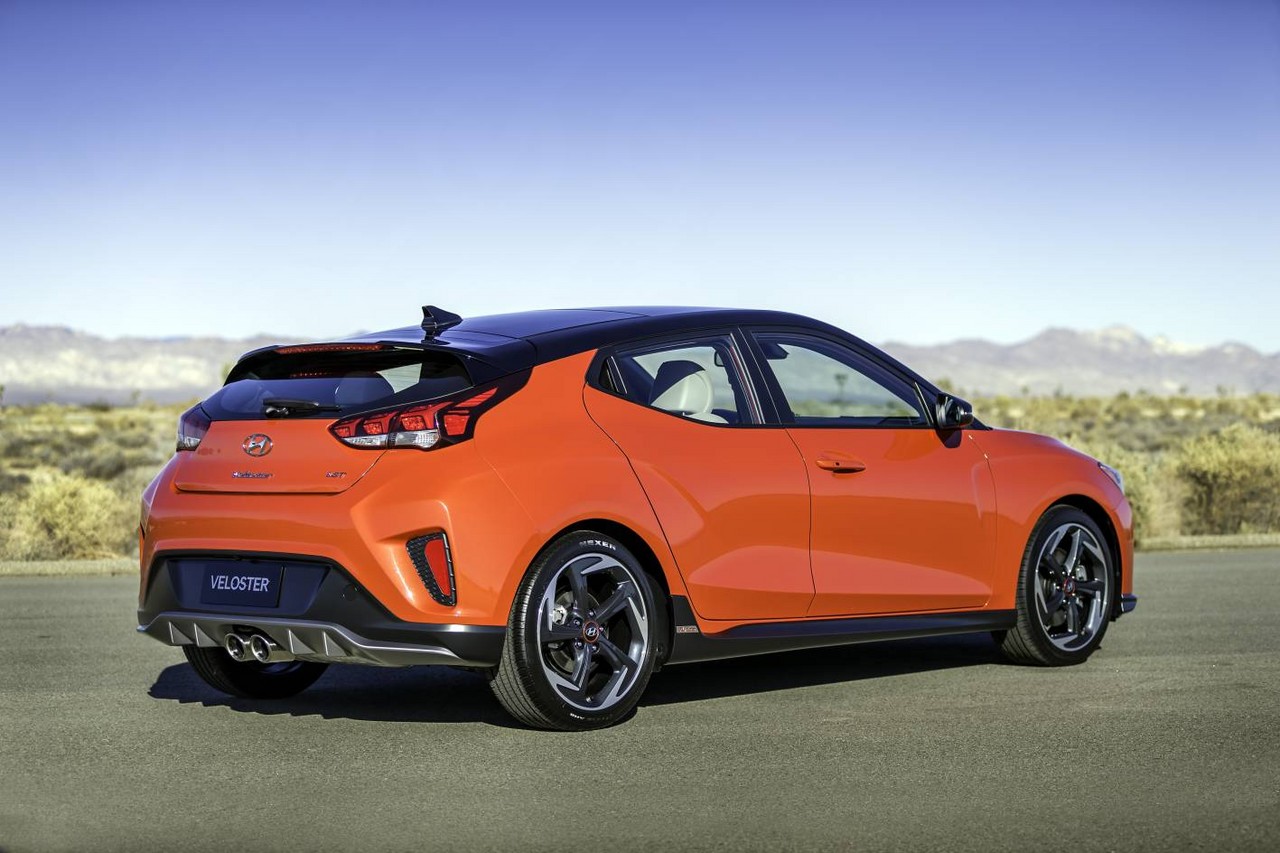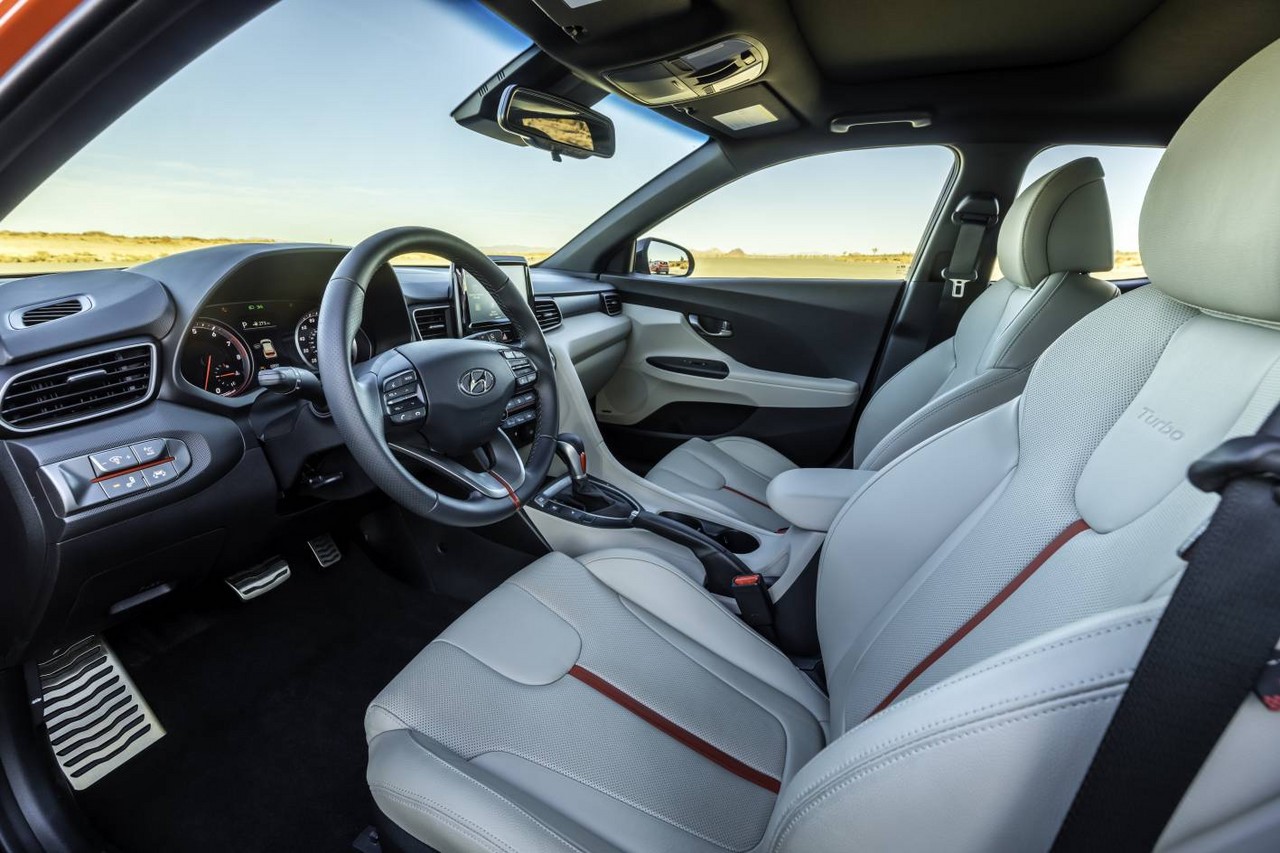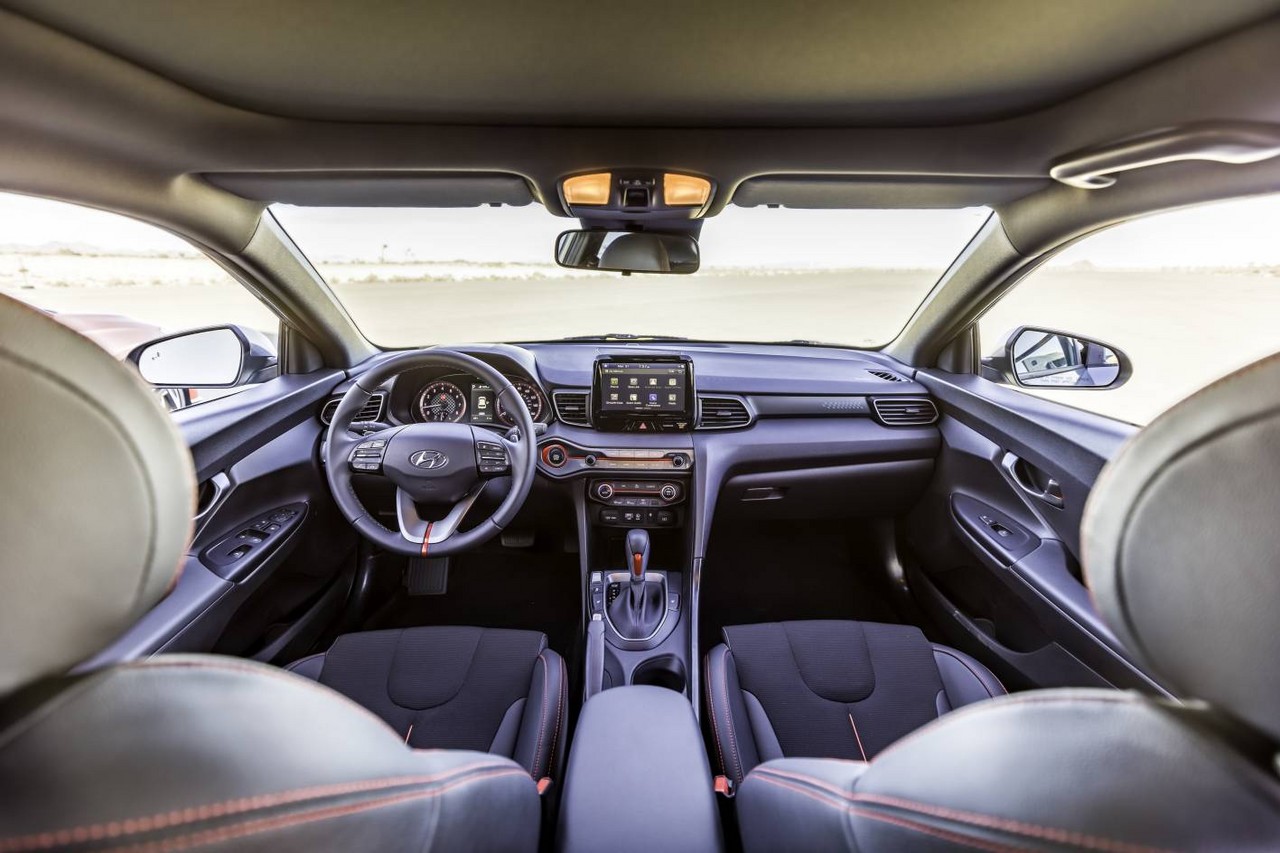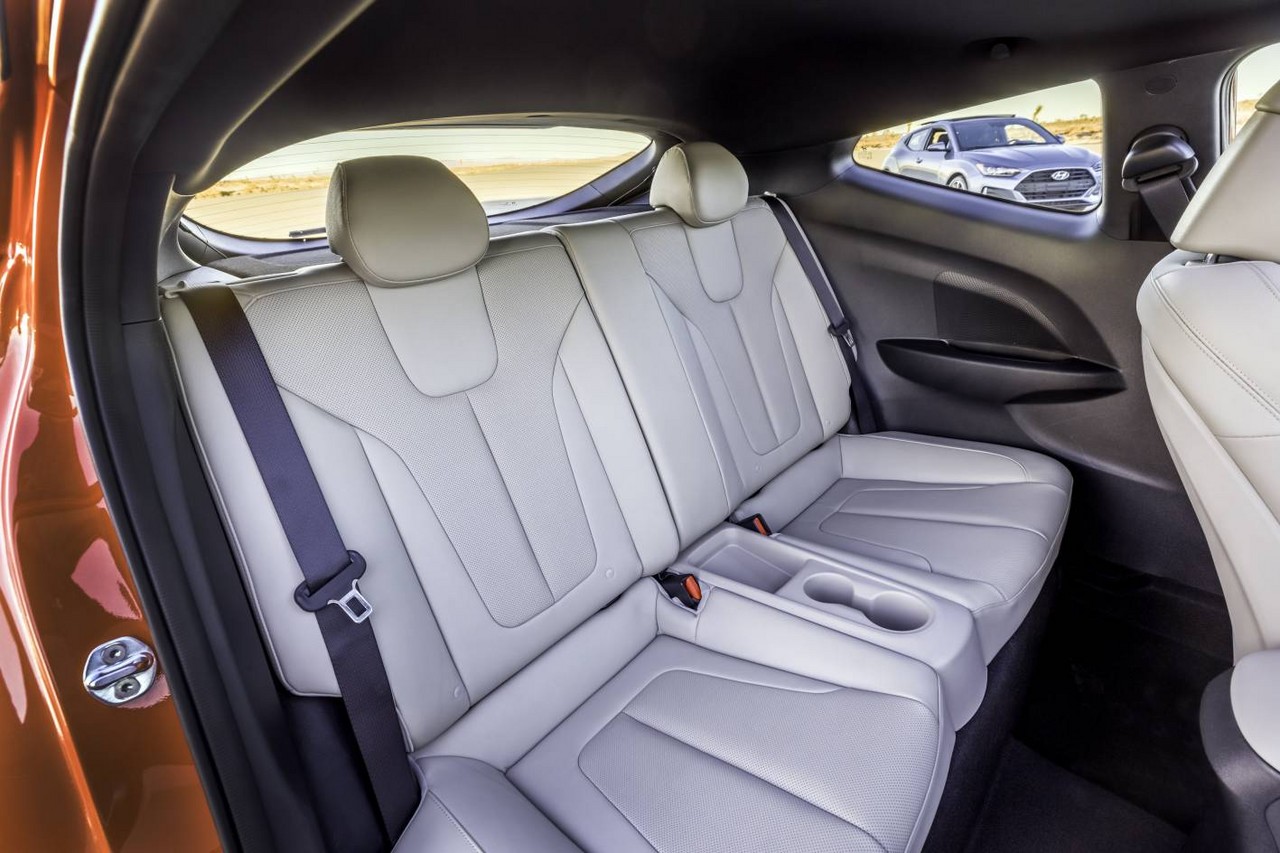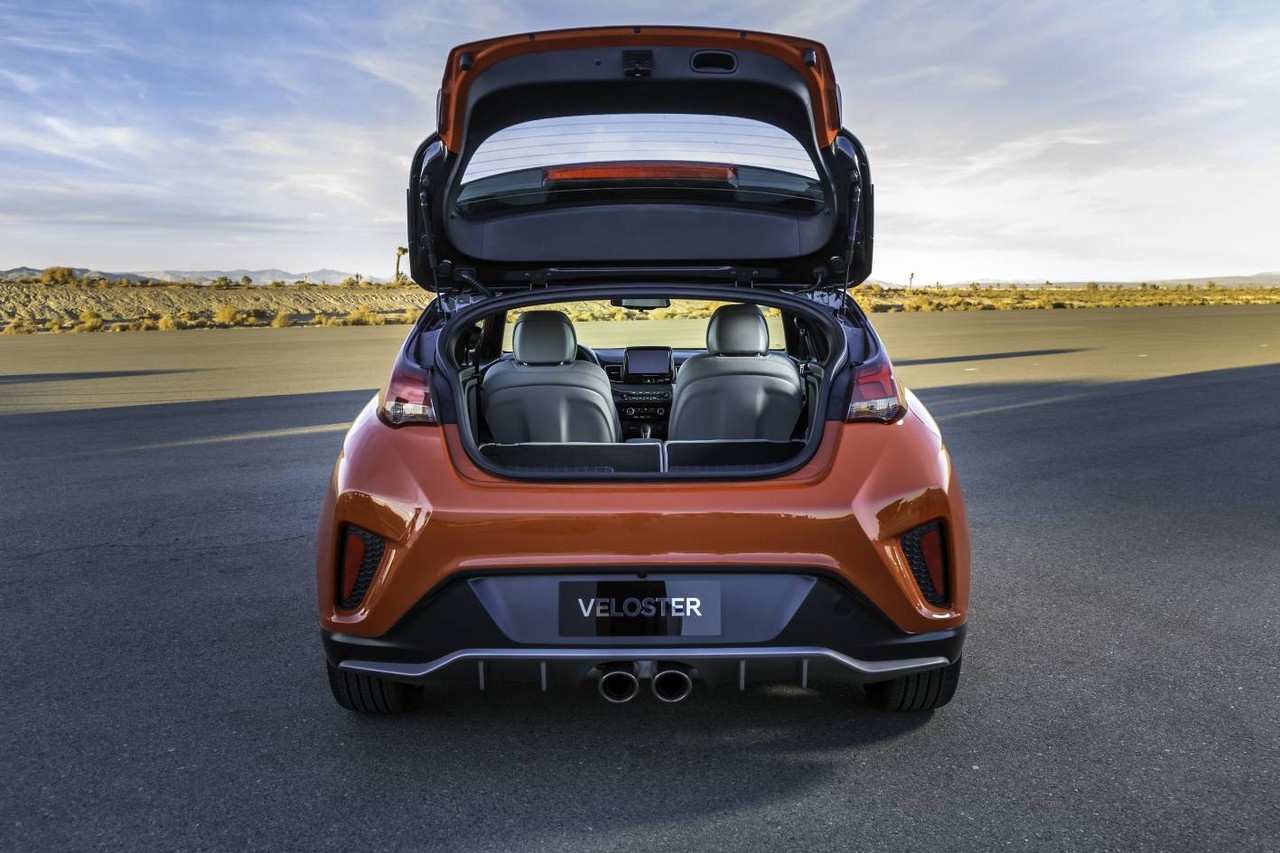
- 2.0-litre engine more responsive than FS Veloster’s 1.6-litre unit
- Powerful engine for Veloster Turbo
- Rear door is on the passenger’s side
- Cabin space reduced by moving A-pillar rearwards
- Unconvincing as a hatchback or as a sports car
Overview
Released in Australia in September 2019, the Hyundai JS Veloster was a three-door hatchback: in addition to its front passenger doors it also had a conventionally hinged rear passenger/left-side door. Manufactured in Ulsan, South Korea, the front-wheel drive Hyundai JS Veloster range initially consisted of 2.0 MPi and Turbo variants, the latter offered in standard and Premium editions.
Hyundai JS Veloster: G4NA, G4FJ and G4KH engines
Of the engines,
- The Veloster 2.0 MPi was powered by Hyundai’s 2.0-litre G4NA petrol engine which was a member of Hyundai’s ‘Nu’ engine family. As such, the engine had an aluminium block and cylinder head, double overhead camshafts, four valves per cylinder, variable intake and exhaust cam timing (Hyundai’s ‘Dual Continuously Variable Valve Timing’ or D-CVVT), a two-stage variable induction system, multi-point injection and a compression ratio of 10.3:1;
- The Veloster Turbo was powered by Hyundai’s 1.6-litre G4FJ ‘Gamma’ turbocharged petrol engine. While the Gamma engine had similar properties to the G4NA ‘Nu’ engine, it had a twin-scroll turbocharger, an air-guided intercooler, direct injection and a compression ratio of 10.0:1. The engine also had an overboost function which could increase peak torque to 276 Nm for limited periods; and,
- The Veloster N – yet to be confirmed for Australia – is powered by Hyundai’s 2.0-litre G4KH ‘Theta’ engine. Key features of the G4KH engine include its twin-scroll turbocharger, electronically-controlled continuously variable valve timing (‘E-CVVT’), two-stage induction system and compression ratio of 9.5:1.
| Engine | Trans. | Peak power | Peak torque | |
|---|---|---|---|---|
| Veloster 2.0 MPi | 1999 cc G4NA petrol I4 | 6sp man., 6sp auto |
110 kW at 6200 rpm | 180 Nm at 4200 rpm |
| Veloster Turbo | 1591 G4FJ turbo petrol I4 | 6sp man., 7sp DCT |
150 kW at 6000 rpm | 266 Nm at 1750-4500 rpm (o’boost: 276 Nm) |
| Veloster N | 1998 cc G4KH turbo petrol I4 | 6sp man. | 202 kW at 6000 rpm | 353 Nm at 1450-4700 rpm (o’boost: 378 Nm at 1750-4200 rpm) |
Dimensions
Compared to the Hyundai FS Veloster , the JS Veloster was 20 mm longer (at 4240 mm) and 10 mm wider (1800 mm), though height (1399 mm) and wheelbase length (2650 mm) were unchanged; ground clearance was 141 mm. Relative to the FS Veloster, the A-pillar of the JS Veloster was moved rearwards and – given the unchanged wheelbase length – this had the effect of reducing cabin space.
Suspension
The Hyundai JS Veloster had MacPherson strut front suspension and multi-link rear suspension; both the front and rear suspensions had twin-tube shock absorbers and stabiliser bars. Furthermore, Australian-delivered JS Veloster vehicles had a locally developed suspension tune.
Steering
The Hyundai JS Veloster had rack-and-pinion steering with electric power assistance (Hyundai’s ‘Motor Driven Power Steering’, or MDPS) in which the motor was mounted to the steering column. The steering ratio was 13.4:1, the steering wheel required 2.57 turns from lock-to-lock and the JS Veloster had a turning circle of 10.6 metres.
Safety equipment
Standard safety equipment for the Hyundai JS Veloster included dual front airbags, front seat-mounted side airbags, full-length curtain airbags (i.e. for front and rear occupants), ABS, electronic brake force distribution, brake assist, electronic stability control, traction control, active front seat head restraints and front seatbelts with pre-tensioners and load limiters.
Beyond this, the JS Veloster was fitted with the following active safety technologies as standard –
- Forward Collision Warning (FCW): operating at speeds from 8 km/h to 65 km/h for pedestrian detection and up to 170 km/h for vehicle detection, FCW used front radar sensors to detect frontal collision risks. If there was a risk of a frontal collision, the driver would be alerted by visual and acoustic warnings;
- Forward Collision-Avoidance Assist (FCA): if the collision risk persisted after the Forward Collision Warning (FCW), the braking system would be prepared so that it would respond faster when the brakes were applied. When a collision was assessed to be unavoidable, maximum braking force would be applied (i.e. autonomous emergency braking or AEB) to reduce vehicle speed and the severity of the collision;
- Lane Keeping Assist (LKA): at speeds above 60 km/h, LKA used the windscreen-mounted camera to detect lane markings and operated where lane markings on both side of the vehicle could be detected. If the JS Veloster departed from its lane without the indicators having been activated, steering intervention would assist the vehicle to track in the centre of the lane;
- Driver Attention Warning (DAW): operating at speeds from 60 km/h to 180 km/h, DAW monitored steering angle, steering torque and the vehicle’s position within its lane to detect inattentive or fatigued driving. If detected, the driver was alerted via an audible tone and a message that suggested they take a break.
The Hyundai JS Veloster Turbo and Turbo Premium were further equipped with –
- Blind-Spot Collision Warning (BCW): operated at speeds above 30 km/h and monitored the rear corners of the vehicle. If another vehicle was detected in these areas, a visual alert would appears in the door mirror on that side of the vehicle;
- Rear Cross-Traffic Collision Warning (RCCW): used radar sensors to scan a 180 degree area behind the vehicle for traffic that may cross the vehicle’s path as it reversed out of a parking space. If detected, visual and acoustic signals would alert the driver; and,
- High Beam Assist (HBA): operating at speeds above 40 km/h in its ‘Auto’ mode, HBA used a windscreen-mounted camera to detect oncoming vehicles and vehicles in the same lane. If detected, HBA would switch to low-beam headlights to avoid dazzling other drivers. When vehicles were no longer detected, the system would revert to high beam headlights for greater visibility.
Finally, Hyundai JS Veloster Turbo models with dual-clutch transmissions (DCTs) had:
- An upgraded camera and radar-based City/Urban/Inter-urban/Pedestrian Forward Collision Avoidance Assist (FCA). For the JS Veloster 2.0 MPi and Veloster Turbo models with manual transmissions, the system relied solely on a camera; and,
- Smart Cruise Control (SCC): using front radar sensors, SCC enabled the JS Veloster to maintain a constant speed or distance from the vehicle ahead. SCC, however, was deactivated when vehicle speed dropped below 10 km/h.
Wheels, tyres and brakes
The Hyundai JS Veloster 2.0 MPi and Turbo had 7.5J x 18-inch alloy wheels with 225/40 R18 tyres. Whereas the Veloster 2.0 MPi had Michelin Pilot Sport 3 tyres, the Veloster Turbo models had Michelin Pilot Sport 4 tyres.
The JS Veloster 2.0 MPi had 280 mm by 23 mm ventilated front brake discs and 262 mm by 10 mm solid rear discs; the Veloster Turbo, however, had 305 mm by 25 mm ventilated front brake discs.
Features: Hyundai JS Veloster 2.0 MPi
The standard infotainment system for the Hyundai JS Veloster 2.0 MPi consisted of a six speaker sound system, a seven-inch touchscreen, Bluetooth mobile phone connectivity and smartphone integration via Apple CarPlay and Android Auto.
The Hyundai JS Veloster 2.0 MPi also featured sport bucket seats, climate control air conditioning, cruise control, daytime LED running lights, rear parking sensors, rear view camera with dynamic guidelines, a leather appointed steering wheel and gear knob, remote central locking, power adjustable and heated door mirrors, power windows, tilt and telescopic steering wheel adjustment, a USB charging port (centre console), tyre pressure monitoring, a 3.5-inch instrument LCD, trip computer and immobiliser.
Features: Hyundai JS Veloster Turbo
Compared to the Veloster 2.0 MPi, the Veloster Turbo was further equipped with an eight-inch touchscreen, satellite navigation, an eight speaker Infinity audio system, digital radio tuner (DAB+), combination cloth/leather seats, low beam LED headlights, LED tail-lights, proximity key, power folding door mirrors, push-button start, a 4.2-inch TFT instrument display and metal pedal pads. Models with dual clutch transmissions also had steering wheel gearshift paddles.
Visually, the JS Veloster Turbo could be identified by its sport grille, side skirts, rear spoiler and diffuser and gloss black alloy wheels. The Veloster Turbo Premium, however, had dark metallic/machined alloy wheels.
Features: Hyundai JS Veloster Turbo Premium
The range-topping Hyundai JS Veloster Turbo Premium was distinguished by its leather seat trim, eight-way power adjustable driver’s seat, heated and air-ventilated front seats, rain-sensing wipers, heated steering wheel, wireless mobile phone charging (Qi standard), Head-Up Display (HUD), electrochromatic rear-view mirror and full-width glass sunroof.
